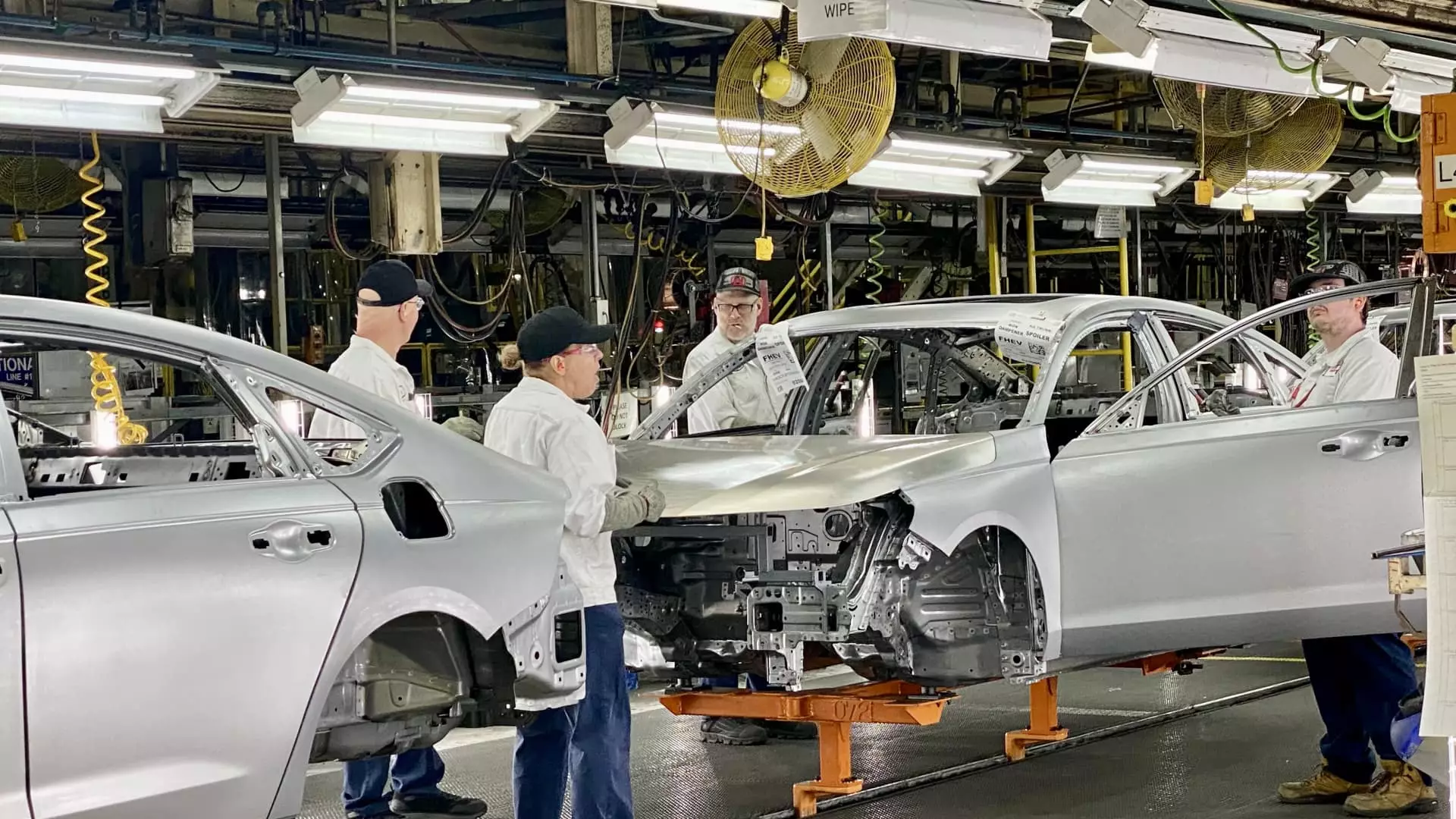The automotive industry is undergoing a seismic shift as companies pivot toward electric vehicle (EV) production—a response not just to changing consumer preferences but also to increasing regulatory pressures aimed at reducing carbon emissions. In this landscape, Honda Motor Co. is stepping into the spotlight with a significant investment aimed at transforming its manufacturing capabilities right in the heart of Ohio. This move reflects a departure from traditional automotive manufacturing practices and presents a bold vision for a sustainable future.
In a surprising decision for a company typically rooted in Japanese manufacturing, Honda is channeling over $1 billion into its Ohio operations, an increase from an initially reported $700 million. This significant financial commitment underscores Honda’s determination to reinforce the state as a crucial hub for its future electric vehicle production. The investment includes state-of-the-art technologies like “giga presses,” notably used in Tesla’s production strategy. These massive machines, capable of exerting up to 6,000 tons of pressure, will streamline the production of vehicle components and potentially reduce manufacturing costs substantially.
This strategic pivot couldn’t have come at a more critical time. The consequences of economic policies, like potential tariffs on imported vehicles during previous administrations, have spotlighted the importance of domestic manufacturing capabilities. With the establishment of an EV hub in Ohio, Honda aims to insulate itself from these external pressures while also leading the charge in EV production sophistication.
Honda’s plans in Ohio are not merely about increasing production volumes; they are repositioning how vehicles will be manufactured. By integrating a new manufacturing architecture called “cell” manufacturing, Honda seeks to modernize the assembly process. Traditionally, assembly lines relied on a linear method where each vehicle moved through a set sequence of tasks. In contrast, Honda’s approach introduces almost 60 flexible manufacturing zones dedicated to battery assembly, enabling parallel operations. This innovative method seeks to mitigate the impact of potential slowdowns, ensuring a more resilient production process.
Bob Schwyn, senior vice president of Honda Development and Manufacturing of America, elaborates on this transformation, bathing the initiative in the metaphor of a “second founding.” This phrase not only refers to Honda’s renewed commitment to manufacturing but also points to a broader ambition: to integrate cutting-edge practices that reflect contemporary environmental responsibilities.
With the establishment of a new battery plant worth $3.5 billion, Ohio positions itself not only as a national capital for Honda’s manufacturing efforts but as a global benchmark for EV production. The Marysville plant’s ability to handle the assembly of traditional vehicles alongside hybrids and fully electric models ensures that it will serve as an invaluable proving ground for innovations that might get implemented worldwide.
Mike Fischer, the North American lead for Honda’s battery-electric vehicle projects, has asserted that Ohio will set standards “for people, technology, and processes” in EV production. This is a strong indication that Honda views their Ohio hub as a both a physical and conceptual centerpiece in its future endeavors, thus elevating the region’s status in the global automotive landscape.
Amid burgeoning competition and evolving consumer expectations, Honda remains steadfast in its objective: achieving zero environmental impact by the year 2050. With a focus on carbon neutrality, clean energy, and resource circulation, the company pledges to exclusively sell zero-emission vehicles by 2040. This ambitious timeline reveals Honda’s commitment to not only adapting to the future of mobility but also to take a proactive role in it.
This commitment manifests within the current investments in Ohio, where Honda is implementing new techniques and processes that are aimed explicitly at minimizing waste and emissions. By utilizing recyclable materials, like a specialized type of structural aluminum for EV battery packs, Honda is actively engaging in a circular economy, thereby enhancing the sustainability credentials of its product offerings.
Honda’s initiative in Ohio signifies a transformative journey for not just the company, but the entire automotive industry. By embracing innovative manufacturing processes and committing substantial financial resources to EV production, Honda is not just adapting to the current market but is actively reshaping its narrative for the future. In doing so, Honda stands poised to lead the charge in sustainable automotive practices, blending cutting-edge technology with environmental stewardship, thus redefining what it means to be a pioneer in the automotive sector.

